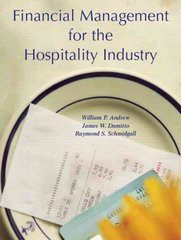L. Clark is the sole owner of a successful lodging chain. The chain is incorporated and generates
Question:
L. Clark is the sole owner of a successful lodging chain. The chain is incorporated and generates pre-tax income of $350,000 each year. At the present time, he receives fringe benefits of $5,000 per year. Assume Clark’s average tax rate on all taxable income is 25%. Clark receives a salary of $150,000 from the chain each year. In addition, $45,000 of dividends are received each year.
Clark is an excellent owner/manager but weak in taxation. At a conference for entrepreneurs, he recently heard about S Corporations, double taxation, excessive salary being labeled as dividends by the IRS, etc. Assume corporation income tax rates as follows:
Taxable Income Tax Rate
$0-$100,000 15%
$100,000—$200,000 25%
over $200,000 40%
Required:
1. Based on the above, calculate the income taxes paid by him and his cor- poration. (Ignore deductions, exemptions, etc., in calculating his personal income taxes.)
2. How would you advise him to minimize the taxes he and his corporation pay? Dividends, as a C Corporation, would have to be at least equal to $40,000 (unless the company files as an “S Corporation”) and the allow- able fringe benefits maximum should be assumed to cost no more than $20,000. (Anything in excess of $20,000 should be considered salary.)
Further, consider the maximum salary allowable by the IRS (if his corporation files as a C Corporation) is $140,000. He desires to continue receiving a total of $200,000 annually in cash and/or benefits. Show your work to determine the total taxes he and his corporation will pay given your advice.
Salary $
Fringe benefits $
Dividends $
S or C Corp.
3. What is the total savings in federal income taxes to Clark and the corpo- ration based on your advice?
Step by Step Answer:

Financial Management For The Hospitality Industry
ISBN: 9780131179097
1st Edition
Authors: William P Andrew, James W Damitio






